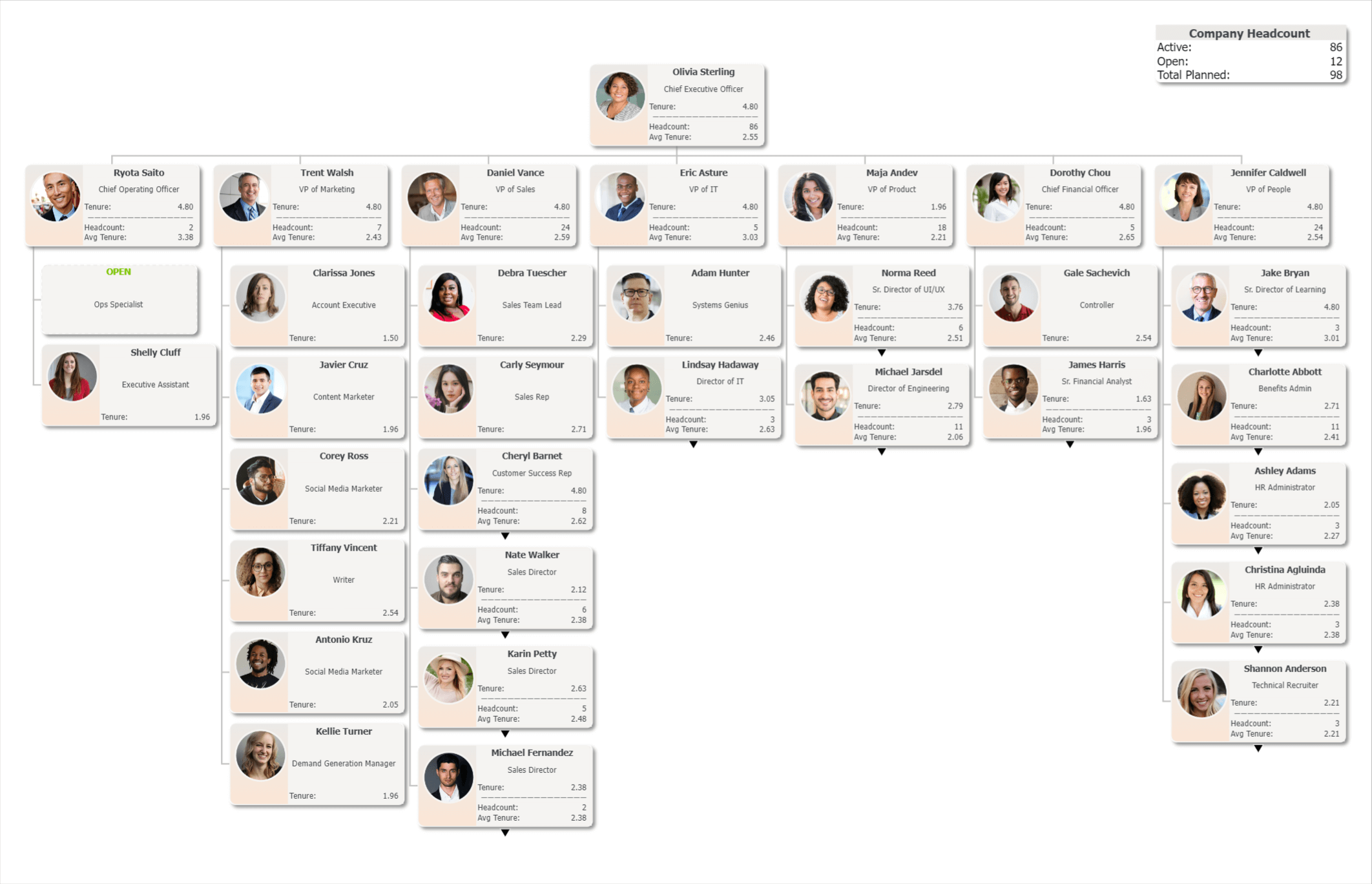May 8, 2024
8:45 AM

An organization’s greatest asset is its employees. Understanding employees’ experiences and identifying opportunities for improvement is critical. Employee journey mapping is one way to better grasp staff needs, expectations, and pain points. It is a simple way to improve organizational operations and enhance the employee experience from recruitment to offboarding.
The employee journey encompasses an employee’s experiences with an organization from the first time they express an interest in the company until their eventual resignation and offboarding. It is like a roadmap with interconnected experiences and leadership touchpoints that shape their career trajectory and impact organizational culture. Understanding your employees’ experiences at every step of their journey is crucial. The impact of the employee journey directly influences employee satisfaction, motivation for quality work, and retention, which all influence organizational success.
Employee journey mapping is a powerful tool for organizations to visualize and analyze their employees’ experiences. A journey map is a visual representation of all stages of employment. This strategic tool systematically charts an employee’s journey from recruitment to offboarding, helping organizations better understand the employee experience to make more efficient and informed decisions.
Employee journey mapping allows HR professionals and organizational leaders to identify the pain points their team faces at each stage and develop strategies for improvement.
The employee journey mapping process involves a few key steps. First, organizations must define the employee personas to map. Next, they map the journey, delineating critical touchpoints at each step. Then, they gather feedback at each step to analyze the experiences and adjust the journey map. Read on as we explore each of these in more detail.
There are many benefits of employee journey mapping, including:
Now that we know the benefits of mapping employee journeys, let’s explore each stage of this journey. Understanding these stages is vital for organizations to optimize the employee experience and make strategic organizational decisions. Each stage presents unique opportunities to positively influence employee satisfaction and motivation, encouraging continued retention.
The hiring stage marks the onset of the employee journey. This stage encompasses all the steps that result in a new hire, such as attraction, recruitment, and the selection process.
The hiring stage is critical for setting the stage for an employee’s journey with your organization. As such, it is essential to attract and hire candidates who are well-aligned with the organization’s culture and values. From the verbiage in your job postings, website, and social media to your reputation in the community, there are endless opportunities to show transparency in your values and organizational goals.
According to Gallup analytics, only 12% of employees feel their company has a robust onboarding process. Employees with positive onboarding experiences are 2.6x more likely to be satisfied with their job. During this vital period of integrating a new employee into your company, a well-structured onboarding program sets the tone for their future experience, laying the foundation for success.
Once an employee is established with the organization and has gotten into a comfortable workflow, the development stage of their journey begins. During this time, staff should feel supported as they learn new skills and build upon their strengths. According to the Pew Research Center, 63% of people who quit their jobs reported a lack of advancement opportunities as a significant reason for leaving. Supporting career development along your employees’ career journey is paramount.
As employees develop new skills and take on more responsibilities, career progression is vital for continued job satisfaction and retention. During this stage, provide opportunities for growth with a structured career progression plan. Providing clear pathways for progression encourages employee engagement while also driving organizational success.
It is often bittersweet when an employee reaches the offboarding stage in their journey. While you’re likely happy for them to pursue new interests and opportunities, it may feel like a significant loss to the organization, especially if they were a high-performing employee. Nonetheless, it is important to maintain professionalism and create a positive departure experience. Take these opportunities to reflect upon each stage of their journey through an exit interview. Effective, efficient, and positive offboarding workflows help the organization maintain a positive brand image and support the company’s overall morale among the remaining staff.

Touchpoints are the vital interactions and moments of engagement throughout an employee’s journey. They influence staff satisfaction, engagement, and retention. Identifying and optimizing these touchpoints allows HR professionals and organizational leaders to enhance the employee experiences, fostering a positive workplace culture.
Pre-application: These touchpoints occur before a formal application and encompass interactions with the company’s brand, such as a potential candidate perusing job postings on career sites, social media, and the employer’s website.
Application: Application touchpoints are the interactions after a formal application has been submitted, including interviews and assessments.
Onboarding: The onboarding phase involves many touchpoints, including orientation sessions, job shadowing, training, and paperwork.
Ongoing: Once an employee has completed onboarding, many touchpoints occur along their journey, contributing to their ongoing engagement and development. These include regular supervisor check-ins, performance evaluations, training and development opportunities, feedback sessions, and positive recognition.
Crafting a practical employee journey map requires strategic planning. Consider the following steps to develop a comprehensive employee journey map that will add value to your organization and impact employee satisfaction and organizational success.
Before outlining your employee journey map, you must clearly define your objectives and goals. Evaluate what is currently working well for your organization and areas for improvement. Then, consider what you aim to achieve in developing your journey map. Perhaps you want to improve employee satisfaction, increase retention, streamline workflows, or align employee experiences with organizational values. Keeping your goals in mind as you embark on the next steps will ensure your journey map and employee initiatives align with the organization’s goals.
The experiences of a new, entry-level staff are likely to be vastly different from one in a leadership position. Identify the personas or employee types within your organization and develop journey maps that are tailored to those. Consider factors like job role, experience level, department, and any other relevant information. Leaning on your org chart can help you quickly identify who falls under each category so your journey map is tailored to the specific needs and experiences of staff in different workforce segments.
Once you have identified the employee personas, map out the entire journey for each persona. Outline the key stages and touchpoints from recruitment to offboarding.
Request feedback from employees at each stage of their journey to gain insights into their experiences and pain points. Employee feedback can be collected through surveys and discussions. Ensure there is a channel for anonymous feedback for employees who may feel less comfortable sharing their feedback openly. You can also gather input from public reviews, such as those on job boards.
Analyze the feedback and identify any opportunities to enhance the employee experience along each step of the journey. Consider changes that can create value for your team. Look for areas where workflows can be more streamlined, barriers removed, or new initiatives developed that would impact staff experience.
With the insights gathered from the feedback and analysis, revise and refine your journey map to incorporate necessary changes or improvements. Employee experiences are continuously evolving. Therefore, it’s vital to continually update the journey map as changes arise. When new feedback is gathered, and processes are modified, update the map to reflect these changes and evaluate the improvements they lead to.
Measuring an employee’s journey involves gathering feedback, analyzing data, and tracking key metrics. A combination of qualitative and quantitative data ensures a comprehensive understanding of an employee’s journey and informs the journey mapping process.
Qualitative data, such as employee feedback, provides direct insights into their experiences and job satisfaction, which is incredibly valuable for informing needed changes. Quantitative data, such as turnover rates, engagement scores, and defined performance metrics, also play a critical role. Analyzing trends in data allows organizations to identify whether changes to the employee journey map effectively target key metrics and organizational goals.
Employee journey mapping helps organizations create value for their employees by identifying and addressing key areas for improvement. By systematically mapping out the employee experience, organizations can pinpoint common pain points and develop strategies to address them, increasing satisfaction and retention. Mapping the employee journey allows HR leaders to gain a deeper understanding of the factors influencing employee experiences at each stage in their journey.
Leveraging employee journey mapping is imperative for continuous improvement and enhancement of the employee experience. Staff satisfaction is necessary for smooth operations and long-term success, as staff are your greatest asset.
Employee journey mapping is beneficial in guiding organizations to elevate the employee experience, resulting in meaningful changes. A 2016 study found journey mapping to highlight areas of needed improvement within the MSU Library, specifically during the onboarding stage.
Prioritizing the employee experience is essential in today’s competitive landscape. Employee journey mapping supports organizations in gaining key insights into the employee experience, identifying areas for improvement, and driving positive change.
To learn about other HR-related hot topics, explore more of our latest blogs, guides, and more here.